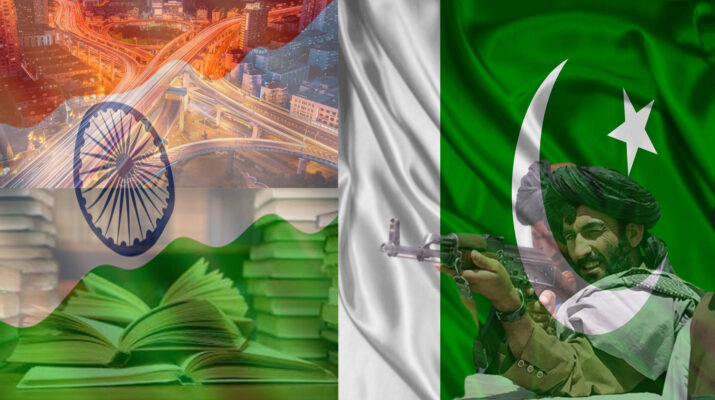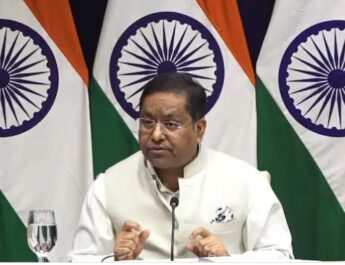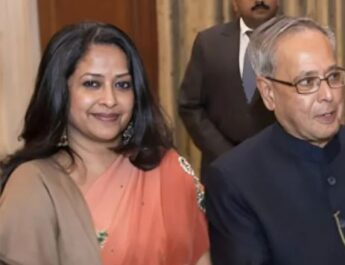‘We fought 3 wars with India. Due to this people only got poverty and unemployment. We have learned our lesson. We want to live in peace.’ Pakistan’s Prime Minister Shahbaz Sharif said this in an interview with Arabia News Channel on 16 January. The statement of peace with India has come at a time when Pakistan is standing on the verge of poverty.
India-Pakistan started together in 1947. In 1960, the per capita income of Pakistan was more than that of India. Then how did Pakistan become like this today? After independence, the journey of India and Pakistan in 75 years will be known on 5 scales…
- Government of the people: 75 years of Pakistan, 33 years of military rule, never in India
Pakistan (got independence on 14 August 1947)
- The first elections were held in March 1951 in the Punjab province of Pakistan. When for the first time the people directly elected their representatives. During this period elections were held in many provinces, but the public did not participate directly in them. That is, only selected people cast their votes.
- Martial law was imposed for the first time in Pakistan on 7 October 1958 and the constitution was dissolved by the first President Iskander Mirza. After this, on 27 October, General Ayub Khan removed President Iskander Mirza and imposed military rule. On 25 March 1969, General Yahya Khan overthrew Ayub and became President himself.
- The first general election in Pakistan was held in 1970, 23 years after independence. Awami League won 167 seats out of total 313 seats. The dominance of the Awami League was in East Pakistan i.e. today’s Bangladesh. Sheikh Mujib-ur-Rehman was to become Pakistan’s first democratic prime minister, but the army, with the help of Zulfikar Ali Bhutto, refused to hand over power.
- On 5 July 1977, Army Chief General Zia-ul-Haq overthrew Zulfikar Ali Bhutto from power in a coup. General Zia arrested Bhutto and put him in jail. On 4 April 1979, Bhutto was hanged in Rawalpindi’s Central Jail on charges of murder.
- On 12 October 1999, General Pervez Musharraf overthrew Prime Minister Nawaz Sharif in a coup d’état and became President himself.
- In Pakistan’s 75 years of rule, power remained in the hands of military dictators for 33 years. This is the reason why in 75 years, 31 Prime Ministers were formed in Pakistan, but no one could complete the term.
India (got independence on 15 August 1947)
- The first national election in India was held in 1951. Congress got 364 seats in the Lok Sabha elections out of 489 seats and Jawaharlal Nehru became the Prime Minister.
- Democracy has never been in danger in India except for the 21 months of Emergency in India from 1975 to 1977.
- Economy: In 1960, Pakistan’s per capita income was 89 rupees more than that of India.
In 1960, Pakistan’s per capita income was 89 rupees more than India, but after 75 years, India has gone far ahead of Pakistan in this matter. On one hand, Pakistan is close to becoming a pauper, while on the other hand, India has also joined the 5 big economies of the world. At the time of independence, the economy of both countries was based on agriculture, which has now shifted to the industry and service sectors.
- Defense: India did a nuclear test first, and Pakistan ahead with making the atomic bomb
After America and China, India is the third country in the world whose defense budget is the highest. Although India has spent 2.4% of its total GDP on its defense budget in 2022, while Pakistan spends 3.74% of its total GDP on the defense budget. On 18 May 1974, India successfully tested the atomic bomb for the first time. At the same time, on May 28, 1998, Pakistan tested the atomic bomb for the first time. At present, Pakistan has 165 nuclear bombs, while India has only 160 nuclear bombs.
- Religious extremism: President-Prime Minister became from a minority community in India, not yet in Pakistan
Pakistan
- On August 11, 1947, in the Constituent Assembly of Pakistan, Mohammad Ali Jinnah said that there would be no discrimination against any citizen on the basis of religion. However, Pakistan made Islam its religion in its constitution. Also, it was said here that the Constitution of Pakistan does not allow non-Muslims to become Prime Minister and President.
Pakistan is a Sunni Muslim majority country. 15 to 20% of the population here is Shia. Here Shias are considered second-class Muslims. According to the South Asia Terrorism Portal, 4847 Shia Muslims were killed in Pakistan between 2001 and 2018.
According to the human rights organization Movement for Solidarity and Peace ie MSP, more than 1000 Christian and Hindu women or girls are abducted every year in Pakistan. After this, they are converted and married according to Islamic customs.
India - In the Constitution of India, all citizens were given the right to freedom of thought, expression, belief, religion, and worship and to equality. In 1976, the 42nd amendment further clarified this by adding the word ‘secular’.
In India, the President, Prime Minister, and Army Chief have also become from the minority community. Only after 20 years of independence, on 13 May 1967, Dr. Zakir Hussain became the President. And on May 22, 2004, Manmohan Singh, who came from the Sikh community, became the Prime Minister. The country’s first Field Marshal Sam Manekshaw was a Parsi.
- Terrorism: Pakistan is home to 40 terrorist groups, and India is suffering from it
Pakistan
- During his visit to America in 2019, Pakistan Prime Minister Imran Khan admitted that more than 40 terrorist organizations are active in his country. Also, he said that 30 to 40 thousand terrorists are still present in Pakistan.
- In 2011, terrorist organization Al Qaeda chief Osama bin Laden was killed in Abbottabad, Pakistan. Laden was living in Pakistan for many years at the instigation of the army.
- Dawood Ibrahim, the main accused in the 1993 Mumbai serial blasts, also enjoys the protection of ISI in Pakistan. Dawood’s name is included in Interpol’s most-wanted list.
- In May 2019, the United Nations Security Council banned the terrorist organization Jaish-e-Mohammed and declared its leader Masood Azhar as an international terrorist. At that time information came to light that Pakistan is the third country with the maximum number of banned people in the whole world.
- The UN has banned a total of 146 citizens of Pakistan. This is the highest number after Iraq and Afghanistan. UN had given complete details of the banned people. It also includes the names of 26/11 mastermind Hafiz Saeed, Lashkar-e-Taiba’s Zaki ur Rehman Lakhvi and Haqqani. Underworld gangster, Dawood’s name is also on this list.
- For the first time in 2008, Pakistan was put on the gray list of FATF for not taking action against terrorism. Under this, he had to take action on terror funding and money laundering. In 2009, he was out of this list. In 2012, Pakistan was once again put on FATF’s gray list. However, in 2015, he again managed to get out of it.
- Pakistan joined FATF’s gray list in June 2018. Pakistan did not get relief even in the review held in October 2018, 2019, 2020, and 2021. However, in October 2022, he got out of the gray list.
India
- India has been suffering from cross-border terrorism for many decades. According to South Asia Terrorism Portal i.e. SATP, from March 6, 2000, to January 15, 2023, 8,473 people have lost their lives due to Pakistani terrorists in Jammu and Kashmir. Among the victims, 3,556 are security forces personnel and 4,917 are civilians.
- The UN has banned a total of 146 citizens of Pakistan. And there is no citizen of India in it. Pakistan has been in the gray list of FATF for many years, while India has never been placed on this list.
Now let us know which 5 major crises Pakistan is facing at the moment and what is the reason for it…
- The purchasing power of common people decreased by 30%: In Pakistan, the purchasing power of lower middle class and lower class people i.e. purchasing power has decreased by 30%. Inflation continued to rise and purchasing power continued to decline. This reduced the demand and businesses also got hit. Things got worse.
- Dollar shortage: Pakistan has only 35 thousand crore Pakistani rupees left in its foreign exchange reserves, which can pay the import bill for only 3 weeks. This is the lowest in the last 9 years. Import of essential commodities is not possible due to lack of dollars. Flour, onions, and essential medicines are not available. The material in thousands of containers is stuck at the port due to the non-receipt of letters of credit from banks. Poultry product prices have increased up to 45%.
3. Locked-in companies: Toyota and Suzuki have closed car plants in Pakistan. Many plants in the major textile industry have also been closed. Toyota has halted production from December 30. Due to a lack of demand, the production of cars, tractors, and fiber has stopped or has been curtailed.
- The flood destroyed 80% of the crops: In Pakistan last summer, 80% of the crops were destroyed due to severe floods in the summer. Due to this, there was a shortage of food items. Uzair Yunus of the Pakistan Initiative of the Atlantic Council says that the flood has added to the trouble.
- Political instability: There is political instability in Pakistan for the last 9 months. The Imran government had announced subsidies on petrol and diesel on the go. Now the Shahbaz government is not able to dare to take it back. As soon as the subsidy is withdrawn, inflation will take a formidable form due to the increase in prices.




